I recently read an excellent nutrition article by Amanda Carlson MS, RD, CSSD in the NSCA Performance Training Journal. The old saying "you are what you eat" is true. Everything we eat is either bringing nutrients or toxins to our cells. The average human being has 300 billions cells that need nutrition to function properly and to be repaired - Carlson's ten points will help keep those 300 billion cells healthy and happy.
Come Back to Earth
This one is simple ... the less processed the better! Our bodies were designed to eat food, and when foods are processed they are no longer foods. They become chemical compounds working in isolation. Whole foods work in an integrated fashion which our bodies were designed to absorb and use for energy, repair, and growth. Another way to think about "come back to earth" is: if you could hunt it or gather it ... eat it!
Eat A Rainbow
For years, "5 a day" has been the mantra and there is nothing wrong with that. But we need to take it another step. We need to eat as many colors of vegetables and fruits as we can a day. Five a day of different colors - green, red, yellow, orange, blue, and purple - is a great starting point. The more color the more nutrients delivered to your 300 billion cells. Variety and diversity!!!
The Less Legs the Better
Generally when it comes to meats - which are a great source of protein - the less legs an animal, has the leaner the meat is. Therefore, fish, turkey and chicken are great choices as they tend to be very lean. However, grass-fed beef and pork can also be very good choices. Grass-fed animals and wild caught fish have much healthier levels of omega 3 fatty acids.
Fats that Give Back
Vegetable oils, nuts, and fish contain heart-healthy fats. Use vegetable fats like olive oil to cook, season and make dressings. Nuts are a great snack as they are filling and are a good source of protein. Fish is low in unhealthy fats, high in protein and high in omega 3s. Omega 3s fight off inflammation which is a major contributor to heart disease, diabetes, cancer and many other common diseases. Fish should be a part of one's diet 2-3 times per week.
Be 3 for 3
You have to eat breakfast, lunch, and dinner! This is key to getting the nutrients your cells need and to maintaining level blood sugar which will keep your energy levels up as well as prevent unhealthy weight gain. Each meal should include a protein, starchy carbohydrate, and fibrous carbohydrate.
Don't Skip Breakfast!
Breakfast is breaking the fast after 6-10 hours without fueling the body. Breakfast jump-starts the metabolism and is key to maintaining a healthy body composition.
Hydrate
Water, Water, Water!!! Water is key to every body system functioning properly. Start the day by drinking a couple of glasses of water. When one awakes they typically have been at rest and without water for 6-10 hours, sometimes even longer ... the body has to have this most essential nutrient!
Don't Waste Your Workout
After a great workout it is time to replenish the lost glycogen to the muscle cells. This can be done easily with a nut butter, hard boiled egg, cheese or yogurt. Whey protein is another healthy choice. This should be done within 45 minutes of completing the workout to speed recovery and protect the muscles from cell damage.
Wise Supplementing
Remember: "supplementing" is just that, in addition to a healthy lifestyle of eating. However, it is an inexpensive health insurance. Choose at least a healthy multivitamin that carries the GMP symbol. Beyond a multivitamin, a fish oil and calcium may be a good choice as well for some people. Always consult your physician or a registered dietician to come up with the right plan for you.
Get Back in the Kitchen!
Coming from an Italian home, this is my personal favorite. Cooking is good for us on so many levels - from family time to healthier eating. Enjoy growing food, shopping at the market, preparing and sharing your meals!
Make these 10 tips a part of your lifestyle and you are on your way to better health and more enjoyment of life! Remember ... You are What You Eat!
To your health,
JULIAN

